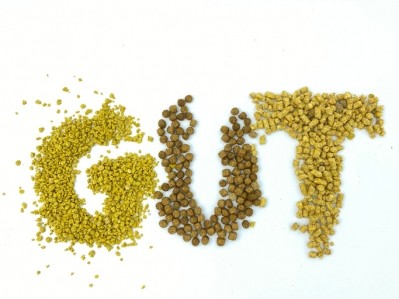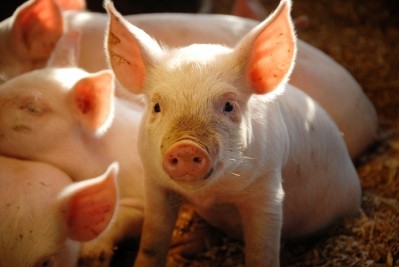What is the nutritional value of poultry-based PAPs for use in pig diets?

Research, undertaken as part of a five-year long private-public partnership (PPP) project involving a cluster of Dutch companies, government agencies, science and social organizations looking at how to encourage greater use of circular feed materials, provides new data on the digestibility and nutritional values of poultry PAPs in pig diets, specifically poultry meal (PM), blood meal and feather meal.
Roger Davin, a monogastric nutrition researcher and consultant, based at Schothorst Feed Research in the Netherlands, reported on the project outcomes earlier this month.
The use of poultry-based PAPs in pig diets requires adequate insight into their nutritional value, but data in the European feed tables are old and based on PAPs of unspecified animal origin, he explained. “Our work provides new data on digestibility and nutritional value for the use of poultry based processed animal proteins in pig diets, specifically poultry meal, blood meal and feather meal,” the monogastric nutrition expert told us.
Digestibility study in grow-finisher pigs
As part of the research work, the team first conducted digestibility studies in grow-finishing pigs.
They evaluated a control diet with no PAPs included as well as five experimental diets containing different PAP products – poultry meals (PM) with high, medium, and low ash content, as well as hydrolyzed feather meal and spray-dried poultry blood meal. “We already knew that feather meal and blood meal are higher in crude protein (CP) than PM but that doesn’t mean they are highly digestible so that was one of the aspects we wanted to evaluate in this trial.”
Findings
In relation to the poultry meals, the researchers observed that the total tract digestibility for organic matter (OM) was lower in the high ash PM product, but that CP digestibility was similar between the three products, thus not affected by the ash content of these poultry meals. Moreover, they saw that the average value for CP agrees with the European feed table values.
“When looking at the crude fat results, we observed that the high ash PM had a lower fat digestibility level compared to the other two sources. On average, the results were in line with the CVB table values but higher than the INRA table values,” Davin reported.
As regards their analysis of ileal protein digestibility of the three poultry meals, assessed in comparison to table values, the researchers noted some variation. The PM with medium ash content had a lower digestibility level while the PM with low ash content had digestibility in line with the CVB meat meal values and only slightly lower than the INRA table values.
“The high ash PM contained a higher proportion of collagen protein as reflected by the amino pattern, with a higher proline and hydroxyproline concentration.”
When looking at the total tract digestibility results of feather meal and blood meal, the team could see that the CP digestibility of feather meal concurred with table values, but fat digestibility was 5-10% lower than table values. Davin said that outcome may be due to the specific processing method used in that feather meal batch. In terms of the blood meal, CP digestibility was higher than in feather meal and in line with the poultry meals but slightly lower than the table values.
The researchers also looked at protein kinetics, the CP digestibility within the distinct locations of the small intestine. “The rate of digestion and absorption differed between the PAPs. The digestion and absorption of crude protein was relatively high in the proximal small intestine for blood meal and lower for feather meal, with potential implications of that finding for gut health,” said Davin.
Validation trials in swine
That digestibility data was validated in two follow-up studies, one in weaned pigs and one in grow-finishing pigs.
In the weaned pig study, which lasted five weeks, the team allocated 360 weaned pigs to five experimental groups. The diets evaluated included a control diet with soybean meal (SBM) inclusion. In the trial diets, 7.5% of the SBM was replaced by either 5% of the high or low ash PM, 4% of feather meal or 4% of the poultry blood meal.
As regards average daily gain (ADG) and feed conversion ratio (FCR) data, the researchers found only the poultry blood meal with low ash was able to match the control in the weaned pig trial.
When the team did the same validation work in grow-finisher pigs, they observed that there was no difference on FCR, ADG or feed intake metrics.
Davin stressed though that the diet compositions for the grow-finisher pigs validation work were based on the digestibility values from pigs of a similar age. “We should probably use a different digestibility ratio for weaned pigs.”








